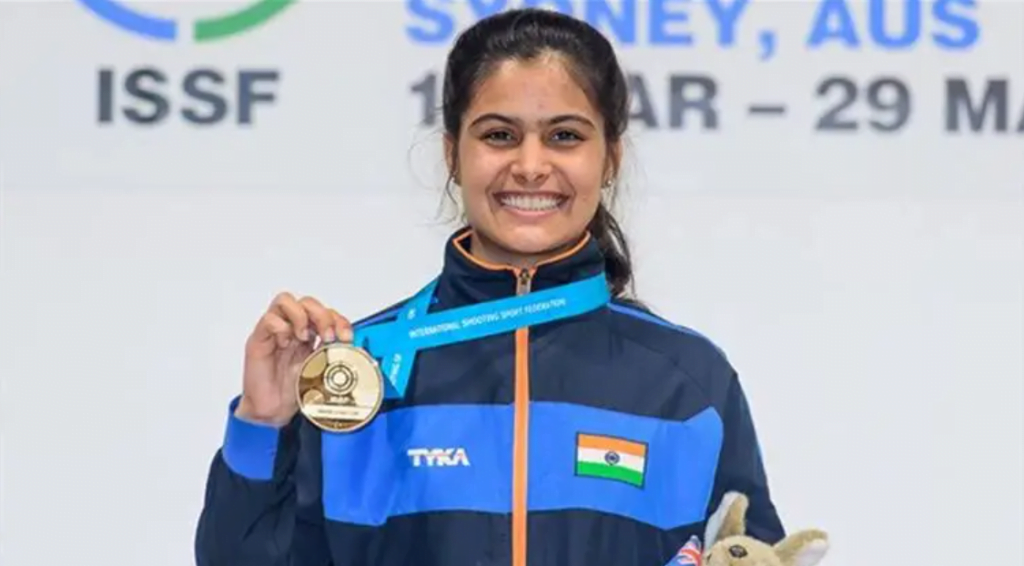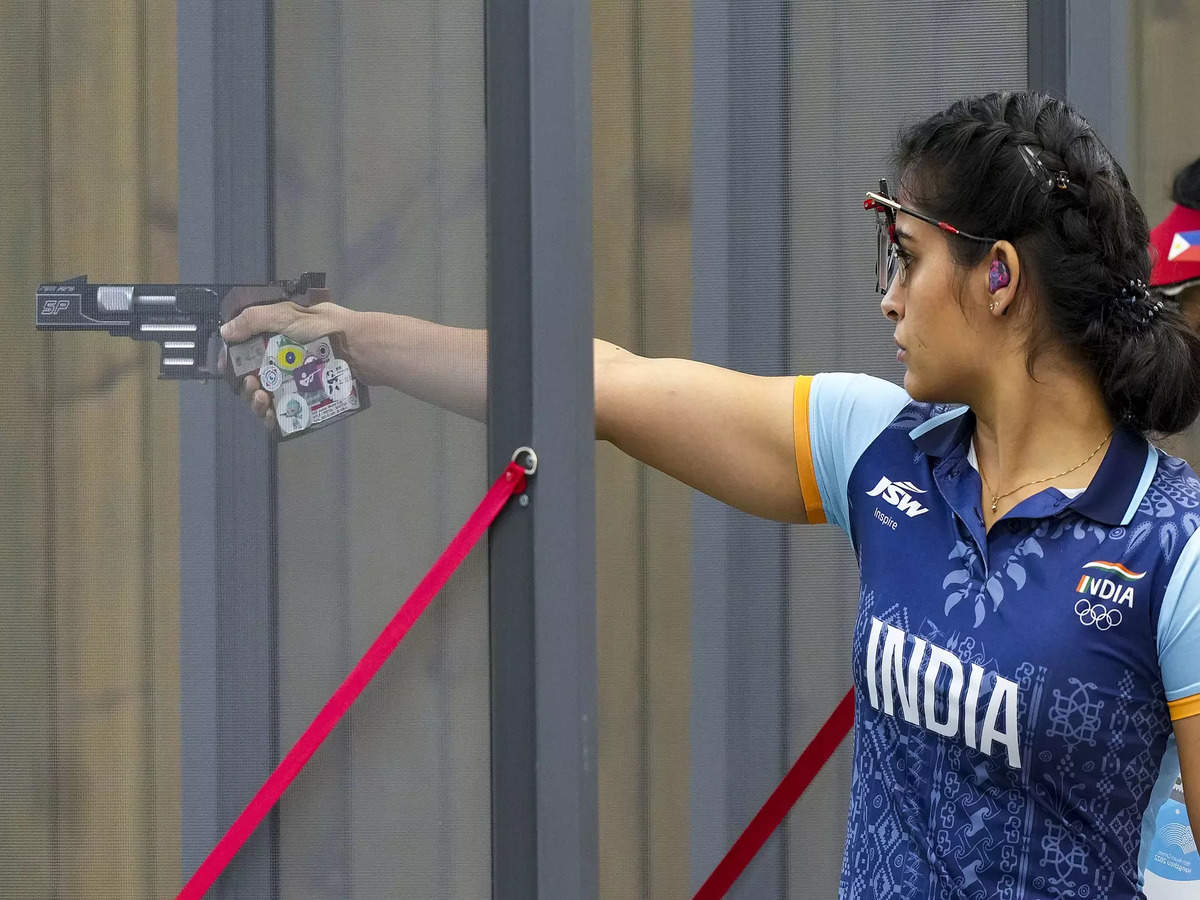The 2024 Summer Olympic Games in Paris, France has been the subject of much discussion and controversy since it started on 26th July. One on hand, athletes like Algerian boxer Imane Khelif have been subject to racist and misogynistic vitriol, while athletes like the Turkish silver-medal-winning pistol shooter Yusuf Dikeç have gone viral for their ‘natural,’ shooting skills. When it comes to country-wise performance, the United States of America is ranked #1 with 24 gold medals, followed by the People’s Republic of China with 22. India is currently ranked 63 and has a total of three bronze medals.
The country’s performance at the Olympics has given rise to much celebration due to record-breaking feats achieved by athletes like Manu Bhaker. On July 28th, she won the bronze medal in the women’s 10m pistol air event, making her the “first Indian woman to win a shooting medal in the Olympics.” Her second victory was as part of a team with Sarabjot Singh. By doing so, she has become the “first athlete from independent India to win two medals at one Games.”
Naturally, her success has been celebrated by all kinds of public figures: celebrities like Alia Bhatt and Kareena Kapoor, political figures like Prime Minister Narendra Modi, and businesswomen like Nita Ambani. Popular culture too has incorporated the historical win into everyday posts and discussions in an attempt to show their support for Bhaker.
Manu Bhakar, public scrutiny, and gendered narratives
Unfortunately (and yet, unsurprisingly) the general discourse surrounding Bhaker’s monumental victory has taken an ugly turn. While many popular pages across Instagram and X (formerly Twitter) respectfully congratulated the athlete, many others have incorporated her appearance into their wishes. As a result, Manu Bhaker’s victory has been appropriated as a tool of misogyny: against her and other women.
Insignificant standards of comparison have been utilised to state that Bhaker is better or far more talented than other female artists and athletes. Bhaker’s athletic abilities are not enough to signify how far she has come in her career as an athlete; her “cuteness” is a metric of success as well. Comments on several of her posts on Instagram say that she would have a flourishing career in Bollywood owing to what the general public has declared her “beautiful appearance.”

These “humorous” suggestions go as far as to suggest that she would do well in the industry since she looks far better than other contemporary actresses. Posts suggesting that she would “eat a 100 Tripti Dimris” and “Alia Bhatts for breakfast” have gone viral.

Further, cricketer Smriti Mandhana has also been subject to ridicule as part of this campaign. Mandhana plays for Royal Challengers Bangalore in the Women’s Premier League. In 2013, she received the Arjuna Award – the second-highest sporting honour. It seems that the sentiments of the country towards athletes who are women are fickle: the instant a “prettier” athlete is celebrated for her achievements, previous champions are discarded and labelled “less than” in an attempt to uphold the current female standard of excellence.

It is important not to mistake such comments for an appreciation of Bhaker’s abilities. Far from acknowledging her achievements, they serve to reduce her accomplishments to mere tools for misogynistic and sexist “humour.” The personalities who congratulated Bhaker are conveniently subject to ridicule, while the ‘nation’s daughter,’ is appreciated as the ideal example of femininity. Proof of the inherently hateful nature of such comments is the fact that they have casually led to outright character assassination online.

The female/athlete paradox
In the course of such discourse, another trend has emerged: Bhaker is “too pretty to be an athlete”. While the intention behind such comments may not be intentionally harmful, it certainly begs the question regarding the general perception of the performance of femininity and womanhood and its connection to athleticism – generally believed to be “masculine.” This can be analysed in relation to the contempt boxer Imane Khelif received.

Gender is a social construct, and so are conceptions of which traits best fit a particular gender. Based on perceptions and beliefs surrounding ideal appearance and personality, individuals are categorised into those who are too masculine or too feminine for the gender, and the ideal gender-conforming individual.
Bhaker and Khelif’s treatment seems to be at different ends of the spectrum, in reality, it has the same misogynistic roots. Both of these athletes do not seem to abide by accepted standards of femininity and sports, albeit in different ways. While the former is seen as far too feminine for a masculine sport, the latter is subject to harassment due to a lack of femininity and excellence in “manly” pursuits.
Seemingly, the very concept of a victorious female athlete seems to be at odds with the hegemonic understanding of the “female gender.” As theorist Andrea Polain explains in her essay The Female/Athlete Paradox: Managing Traditional Views of Masculinity and Femininity:
“How can you win if you’re female? [..] Femininity by definition is not large, not imposing, not competitive. Feminine women are not ruthless, not aggressive, not victorious. It’s not feminine to have a killer instinct, to want to win with all your heart and soul to win…Femininity is about appearing beautiful and vulnerable and small. It’s about winning male approval.“
Thus, while Bhaker and Khelif’s treatment seems to be at different ends of the spectrum, in reality, it has the same misogynistic roots. Both of these athletes do not seem to abide by accepted standards of femininity and sports, albeit in different ways. While the former is seen as far too feminine for a masculine sport, the latter is subject to harassment due to a lack of femininity and excellence in “manly” pursuits. Such is the ‘female/athlete paradox‘:
“One of the prevailing arguments presented by multiple researchers states that athletic women face a dilemma; they are expected to succeed in their sport while maintaining hegemonic femininity, which can be a difficult balance to establish and maintain […] This conflict describes what is referred to as the ‘female/athlete paradox’.“
What significance do nationwide displays of honour and respect have, when the inherent belief of many negates attempts at portraying a culture of acceptance? Deeming female athletes like Manu Bhaker as the new sports icons is not enough when online culture’s understanding of athleticism is rooted in misogyny. Under their purview, being a woman and an athlete are at odds with each other. The intersection of the two is precisely and merely that: the coming together of “different” elements for a brief period.
About the author(s)
Aaliya Bukhary (she/her) is student of Economics student based in Mumbai. She is passionate about merging data analysis with her love for writing, and aspires to empower through information. Aaliya also has a fondness for cats and enjoys listening to Mitski!






nice!!! You cherry-picked those incidents where women were subjected as victims (Men were the perpetrators as all ways or else it will not feed your propaganda) while you forgot the same things women worldwide (including Indian) with Thomas Ceccon an Italian Gold medalist in swimming. Some said his looks/eyes are sexually attractive. Some said that his chest wets her v*g*n*. Some women also said the same thing about an archer (I don’t remember his name. Probably from some middle eastern country and not a medalist). Also the same things women said about Neeraj Chopra when he won the gold in 2021. Duplantis was praised because he ran and hugged hid girlfriend more than his 6.25m pole vault breaking his own world record. So what will you say this originates from? The roots of feminism or something?